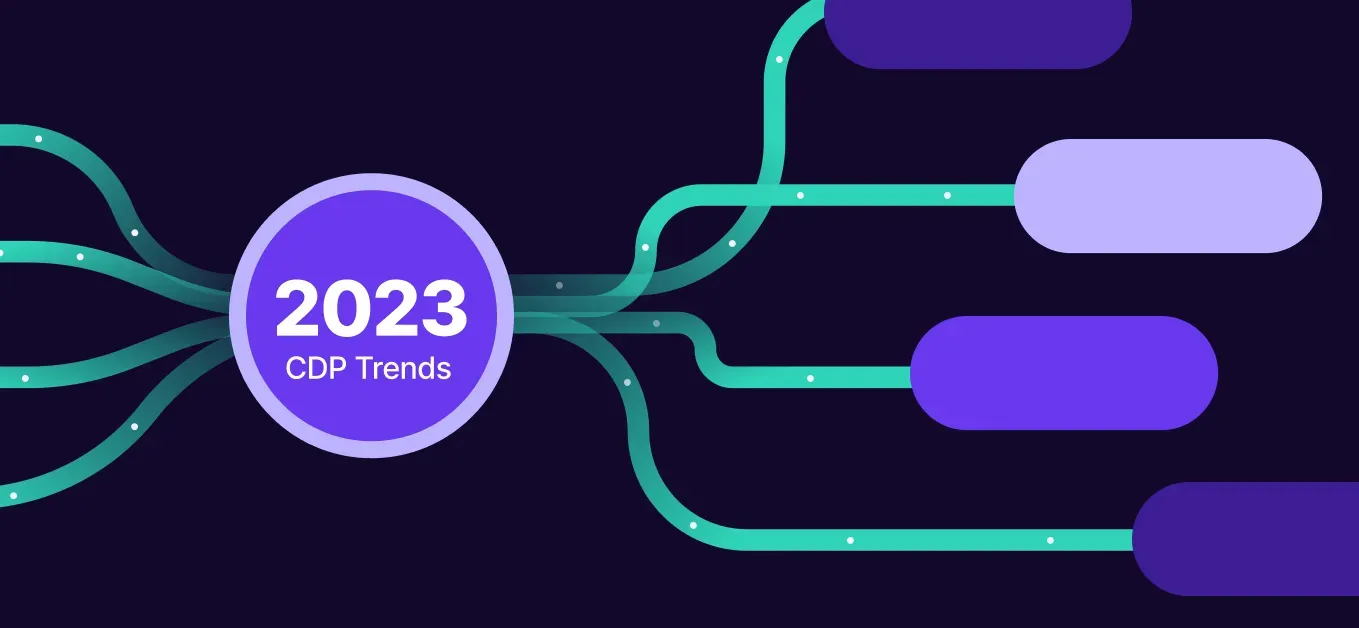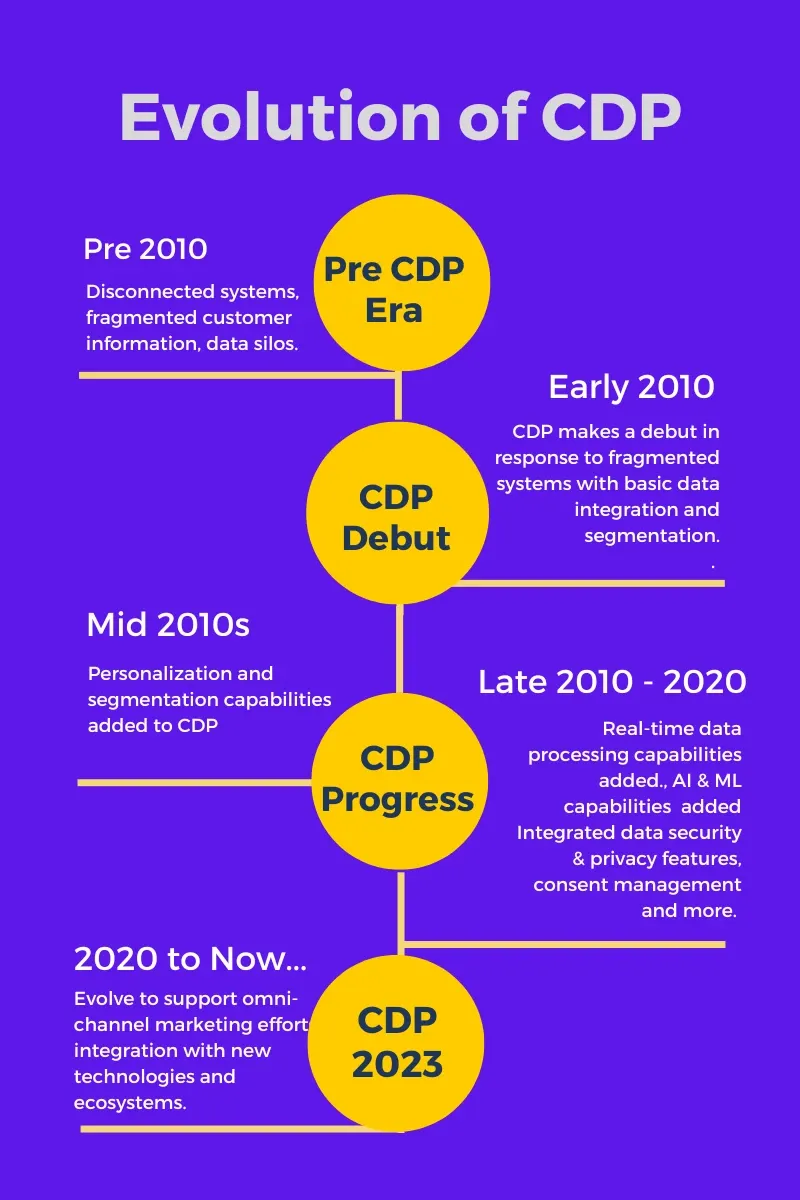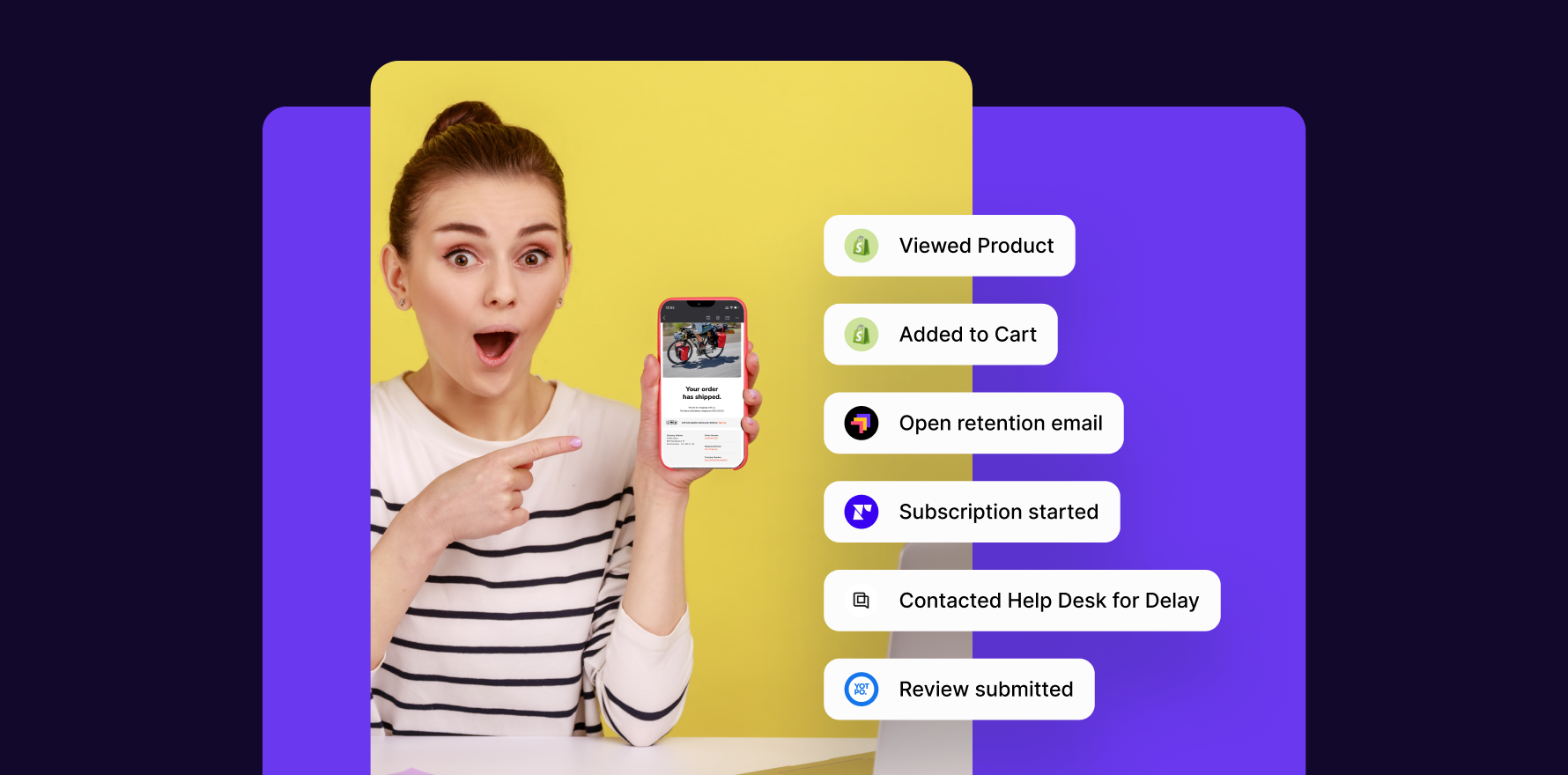The Customer Data Platform (CDP) landscape has seen a radical shift over the last few years, with 2023 ushering in a new era of innovation and user-centric approaches. With the CDP market predicted to be worth $5.5 billion by 2028 the technology is sure to grab eye-balls across industries. The rising popularity of CDP can be attributed to:
- 80% new age customers give weightage to their experience with a brand rather than the product or service.
- Marketers prioritize first party data to deliver personalized customer service.
- Marketers emphasize getting a 360 degree view of customer interaction with a brand to formulate data driven marketing strategies.
- Growing awareness of the importance of delivering stellar customer experiences among marketers.
Over the years, CDPs have emerged as a one stop solution for customer data management, thanks to their ability to combine customer data from multiple sources to provide a single view. With features such as data integration, segmentation, personalisation, and campaign orchestration, CDP enables businesses to enhance customer engagement and achieve higher conversion rates.
Evolution of CDPs: A Brief Overview
Before delving into 2023’s trends, it’s essential to understand how Customer Data Platforms have evolved to meet the dynamic needs of modern businesses. CDP made its debut in early 2010 in response to the limitations associated with CRM systems. Below is a snapshot of how CDP has evolved since its arrival.
Evolution of CDPs
As technology evolved, consumers started interacting with businesses through multiple channels like mobile apps, websites, social media, chats, instant messenger, emails, and more. There was an urgent need to collect data from all these sources in one place and create a unified customer profile to get a better understanding of the customer. In 2010, CDP entered the scene with the sole aim of collecting, organizing, and integrating customer data across all touchpoints.
The next phase involved adding features that enabled brands to connect both online and offline customer interactions to enable marketers to get a holistic view of customer preferences. In order to deliver highly personalized experiences, the focus has now shifted to personalization and segmentation capabilities. Adding marketing automation and analytics enabled businesses to design data (demographics, customer behavior, and preferences) driven campaigns.
With more advancements in technology and the rising popularity of social media and chats, customers now expect real-time responses. To accommodate customer preferences, CDPs incorporated real-time data processing capabilities, which enabled businesses to respond with relevant communication to customers in a timely manner. Next was integrating AI and ML (artificial intelligence and machine learning) into CDP platforms, which made them capable of conducting customer behavior analytics and predictive analytics.
In their current avatar, customer data platforms support omnichannel marketing, enabling businesses to deliver consistent communication and experiences across all customer touchpoints. They can seamlessly integrate with other existing systems, tools, marketing technologies, and the entire tech ecosystem, enabling businesses to leverage customer data across a broader spectrum.
Modern data platforms do more than just collect data in one place. They help businesses make sense of that data and utilize the goldmine of information to drive highly personalized, effective marketing strategies and, in the process, drive customer engagement.
CDP in 2023: Latest Trends
CDP Latest Trends
CDPs eliminate traditional data silos and create unified and centralized first-party customer data, making businesses capable of better leveraging consumer data and making it more accessible to teams that require the information for the campaign launch, analytics, and customer service.
The last two years have seen customer data platforms evolve by leaps and bounds. With CDP becoming so popular, one can expect the following trends to emerge:
Rise of Real-time Data Processing
Gone are the days of delayed analytics; 2023 marks the dominance of real-time data processing, allowing businesses to make instant, informed decisions. Organizations today cannot undermine the ability to gather, process, and analyze data in real time in the realm of consumer data management. With real-time analytics, businesses can capture and evaluate client interactions and behaviors as they occur. This enables them to quickly respond to client needs, anticipate new trends, and make data-driven decisions in a dynamic business environment. A plethora of big names, such as Airbnb, Expedia, and Sephora, rely on real-time data analytics to optimize their services and improve client experiences.
Integrating AI and Machine Learning Capabilities
Artificial intelligence and machine learning are no longer mere buzzwords; they’ve become integral parts of CDPs, offering smarter data insights and predictive analytics. AI & ML have totally transformed how businesses manage and perceive customer data management. They enable businesses to automate data analysis, extract insights, predict customer behavior, segment clients, and detect patterns. Businesses today leverage AI and ML to make data-driven choices, improve consumer experiences, and propel corporate growth. All of this information helps businesses create highly engaging content that resonates with their customers.
Lifesight’s CDPs Measure module gives businesses access to advanced measurement techniques like multi-touch attribution, marketing mix modeling, and incrementality experiments.
Enhanced Data Privacy and Security Measures
We are all aware of rising cybercrimes, data protection, and privacy issues. CDP is all about customer data; hence, with growing concerns over data breaches and privacy, the latest CDPs of 2023 must prioritize robust security measures without compromising on data accessibility. Being compliant with regulations such as GDPR (General Data Protection Regulation) and CCPA (California Consumer Privacy Act) is the first step towards ensuring data privacy and security and is non-negotiable. Transparent data handling, consent management, data privacy, and compliance are also legal requirements and differentiators in the realm of eCommerce.
Lifesight’s CDP platform integrates data into client’s own data warehouses, giving them control over their data while ensuring they can derive maximum value from it.
Omni-channel Customer Journeys
The new-age tech-savvy customer uses multiple channels, both online and offline, to communicate with a business and expects the experience to be seamless. Mapping and understanding the omni-channel customer journey have taken center stage, enabling businesses to offer a seamless and personalized customer experience. Today, CDPs integrate data from both online (websites, mobile apps, and social media) and offline (physical stores) channels, providing a holistic view of their customers and becoming enablers of delivering consistent and personalized experiences both online and offline. Nike, Marks & Spencer’s, H&M, and many other retail giants have embraced omnichannel strategies to deliver consistent experiences to their customers.
Lifesight’s CDP platform, with its comprehensive data integration and omnichannel marketing automation capabilities, is capable of orchestrating seamless omnichannel customer journeys and experiences.
Improved Data Unification and Quality
The emphasis has shifted from merely collecting data to ensuring its accuracy, consistency, and reliability, ensuring businesses act on quality insights. The traditional third-party data (which is primarily demographic-based) no longer works when it comes to executing highly personalized campaigns at scale. Not to mention the garbage one collects in the form of duplicate and incorrect emails and other contact information. Unifying independent databases using the right technology helps a business get a holistic and accurate view of data and eliminates any duplicacy whatsoever. New-age CDPs such as Lifesight ensure accurate and quality data by integrating the data sources and destination. Getting data from different sources to a single location ensures all departments within an organization are aware of the entire customer journey.
CDP’s Integration with Other Tech Tools
Technology is a big investment, both in terms of time and money. Most organizations are already using some technology systems and tools. But this also poses the challenge of data lying in silos, and this siloed approach is a thing of the past and for a reason. The sources from which data is flowing in and the amount of customer data companies are handling today are unimaginable. CDPs need to up their game and seamlessly integrate with other marketing technologies in 2023 and beyond if they are to position themselves as the single source of truth for all customer data. A unified marketing ecosystem is what businesses are looking for in this digital era.
The Growth of First-party Data
Before we delve further, let’s understand first-party data.
First-party data:
Every click, scroll, browse, add to cart, comment, or anything else that your customer does on your website, mobile app, or social media handle is first-party data. There is a reason it is gaining more popularity over third-party demographic data. First-party data collects customer behavioral and affinity data, which helps you decode what resonates with your customers and provides more predictive value
No wonder that in the age of cookie-less marketing and privacy regulations, first-party data has become the gold standard for businesses aiming for effective customer engagement.
CDPs to be utilized beyond marketing
In the cloud-first world, a unified database system like CDP is not just relevant for marketing teams but also for other verticals like IT, sales and customer support teams as well. Giving access to customer data to all parties directly or indirectly dealing with them helps them get an in-depth understanding of customer needs, preferences, and behavior, which ensures omnichannel personalization and effective customer engagement.
Must have CDP Features in 2023 & Beyond
In the modern business landscape, CDP plays a pivotal role in providing businesses with customer data that they can analyze and act upon with ease. However, with a plethora of CDPs available, choosing the right fit can be an overwhelming task, to say the least. However, given the current CDP trends, make sure you choose a platform that provides you with the following features:
CDP Features 
Customers today, though operating in a digital space, expect personalized preferential treatment and instant gratification. Hence, your CDP must be able to comprehend how your customers interact on your website, app, and all the touchpoints in their customer journey and create unique customer profiles. It should be able to match a customer’s identity across various touchpoints, applications, and communication channels, which can deliver a personalized experience on every interaction.
Integration with Existing Marketing Tech-Stack
A good customer data platform must be able to integrate and utilize data from your existing marketing and advertising tools at a single location to make more sense of it. Furthermore, it should be able to do custom segmentation of customer data points to help you create highly personalized interactions across different communication channels and search engines.
Perpetual Tracking of Customer Behavior
Every customer is unique with their own preferences regarding products, prices, discounts, and even browsing habits, which change with time. Tracking customers is, therefore, not a one-time activity but an ongoing process. CDPs must therefore continuously track customer behavior across various touch points so that they get real-time insights on what is influencing their purchase decision at that very moment.
Analytics
A modern-day CDP should harness the capabilities of AI and machine learning to provide you with information that is easy to navigate and act on. It should allow you to generate reports in real-time that are easy to share and use.
Ability to Integrate Online and Offline Data
Physical retail stores will never be out of fashion; they will continue to coexist with the online marketplace. To get a holistic picture, businesses need to integrate both online and offline data in a single place to create unique customer identities and engage them effectively both online and offline. Your CDP must have the ability to create a single source for both online and offline data points.
Compliance with Privacy and Security Matters
Make sure your CDP is privacy and security compliant. Do check for ISO 27001, ISO 27017, ISO 27018, CSA Star certifications, and the GDPR seal.
Epilogue
The CDP market will continue to evolve given the rapid pace of digitization and technological advancements. Data is the new gold and effectively utilizing data is the way forward for businesses to stay relevant and for long-term success and growth. Businesses today need to steer away from redundant technologies, embrace the latest trends and invest in a customer data platform that helps them stay relevant in the current scheme of things. Book a demo now!
You may also like
Essential resources for your success


















